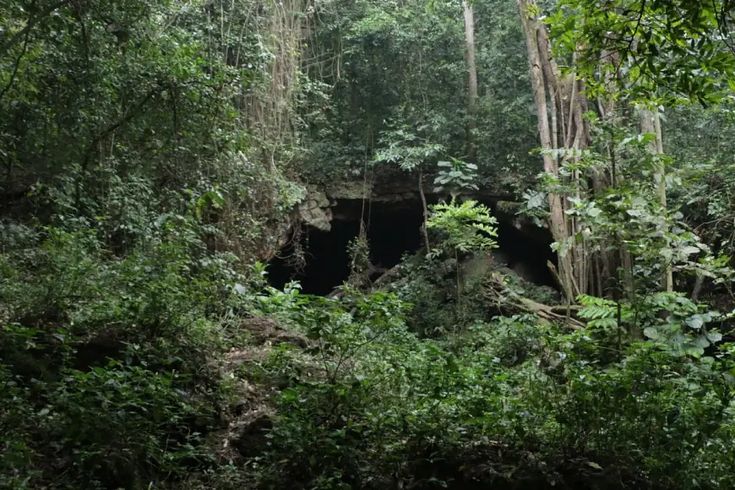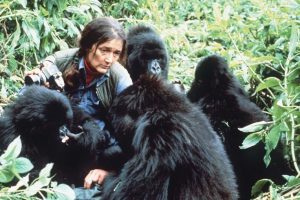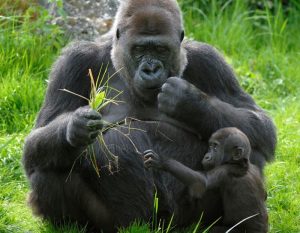Maramagambo Forest.
Maramagambo Forest Located in the southern part of Queen Elizabeth National Park in western Uganda, Maramagambo Forest is a lush, tropical forest known for its rich biodiversity, mysterious beauty, and unique wildlife experiences. Spanning across the districts of Bushenyi and Rukungiri, Maramagambo offers a quieter, more secluded experience compared to the more commonly visited areas of Queen Elizabeth National Park. This forest is a paradise for nature lovers, adventure seekers, birdwatchers, and wildlife enthusiasts.
1. Wildlife and Primates in Maramagambo Forest
Maramagambo is a haven for various primates, mammals, reptiles, and insect species. Some of the notable animals found here include:
- Chimpanzees: Although chimpanzee tracking is more common in places like Kibale Forest, Maramagambo is also home to a smaller population of these great apes. Sightings can be rare, but the presence of chimpanzees adds an element of excitement to any trek.
- Other Primates: The forest is home to several species of monkeys, including red-tailed monkeys, black-and-white colobus monkeys, blue monkeys, and vervet monkeys.
- Bats: One of Maramagambo’s most famous attractions is the Bat Cave, where thousands of bats roost. The cave also draws attention due to the presence of African rock pythons that prey on the bats, creating a fascinating predator-prey dynamic in the ecosystem.
- Forest Elephants: Unlike the larger savanna elephants, forest elephants are smaller and darker, adapted to the dense vegetation of tropical forests. Spotting them can be challenging due to the dense canopy, but they are occasionally seen along the forest edges.
2. Bird Watching
Maramagambo Forest is a top destination for birdwatching in Uganda, with over 200 bird species recorded. The variety of habitats—from thick forest canopies to open trails—attracts a mix of forest and migratory bird species. Some notable birds include:
- African Fish Eagle
- Rufous-bellied Heron
- African Harrier Hawk
- Black Bee-eater
- White-naped Pigeon
- Blue-breasted Kingfisher
- Yellow-throated Cuckoo
With such diversity, birdwatchers can enjoy sightings of rare and beautiful species, especially during the early morning hours when the forest is alive with bird calls.
3. The Bat Cave and Python Viewing
One of Maramagambo’s unique and thrilling attractions is the Bat Cave, which is home to thousands of Egyptian fruit bats. This cave has a viewing platform for visitors to observe the bats without disturbing them, and the experience is one of the highlights of visiting Maramagambo.
The Bat Cave is also notable because African rock pythons reside here, preying on the bats. Observing the predator-prey relationship between these pythons and the bats provides visitors with a rare glimpse into the complex balance of the forest ecosystem.
4. Crater Lakes and Scenic Spots
The forest is surrounded by several crater lakes, which add to its beauty and provide excellent opportunities for sightseeing and photography. These lakes are part of the volcanic landscape that defines much of western Uganda. Some of the well-known crater lakes include:
- Lake Nyamusingire
- Lake Kyasanduka
These crater lakes are not only picturesque but are also home to a variety of bird species, providing great opportunities for birdwatching. Walking along the shores of these lakes offers beautiful views of the forest and surrounding hills.
5. Nature Walks and Trails
Maramagambo Forest offers several well-maintained trails that allow visitors to explore the forest’s interior. Some of the popular trails include:
- The Forest Circuit: This trail takes visitors deeper into the forest, providing opportunities to spot various primates, butterflies, and birds.
- Lake Nyamusingire Trail: This trail takes you to the shores of Lake Nyamusingire, where you can enjoy scenic views and observe water-loving birds.
Guided walks offer insights into the forest’s biodiversity, including its plant species, fungi, and insect life. Local guides have in-depth knowledge of the forest’s ecosystem, making the walk both educational and immersive.
6. Cultural and Historical Significance
Maramagambo Forest also holds cultural and historical significance for local communities. The word “Maramagambo” means “end of words,” originating from a local legend. According to this legend, a group of people once got lost in the dense forest and were so exhausted by the time they found their way out that they could not speak—hence the name. This story adds a sense of mystery and adventure to the forest, as visitors explore the same trails where this tale is believed to have unfolded.
7. Conservation Efforts
As part of Queen Elizabeth National Park, Maramagambo Forest is protected under Ugandan wildlife laws, with conservation efforts led by the Uganda Wildlife Authority (UWA). Conservation work in the forest focuses on preserving biodiversity, preventing illegal hunting, and promoting sustainable tourism. The Bat Cave, for instance, has been made safe for viewing to balance tourism and conservation.
Local community involvement is also encouraged, with several initiatives aimed at educating communities about the importance of preserving their natural environment. Community-based tourism projects help the local economy, reducing dependency on forest resources and fostering a greater sense of stewardship among residents.
8. Nearby Attractions
Maramagambo Forest is located within Queen Elizabeth National Park, allowing visitors to combine their forest adventure with other wildlife experiences. Some nearby attractions include:
- Kazinga Channel: Known for its high density of hippos, crocodiles, and water birds, the Kazinga Channel offers boat cruises that bring visitors close to the animals.
- Ishasha Sector: Famous for its tree-climbing lions, the Ishasha Sector offers unique game viewing opportunities not far from Maramagambo.
- Kyambura Gorge: Known as the “Valley of Apes,” Kyambura Gorge offers chimpanzee tracking experiences just a short distance from Maramagambo Forest.
9. Best Time to Visit
The best time to visit Maramagambo Forest is during the dry seasons: from June to September and December to February. These months have less rainfall, making the trails easier to navigate and wildlife sightings more frequent. During the wet seasons (March to May and October to November), the forest trails can become muddy and challenging to walk, though bird watching can still be excellent.
10. Accommodation Near Maramagambo Forest
Visitors to Maramagambo Forest can choose from several nearby accommodation options, ranging from luxury lodges to budget-friendly facilities. Some popular choices include:
- Jacana Safari Lodge: A luxurious eco-lodge located near the forest, offering comfortable rooms and scenic views of Lake Nyamusingire.
- Mweya Safari Lodge: Positioned within Queen Elizabeth National Park, this lodge provides upscale accommodation and offers excellent views of the Kazinga Channel.
- Pumba Safari Cottages: A mid-range option located near Kyambura Gorge, known for its friendly staff and serene surroundings.
Conclusion
Maramagambo Forest is a hidden gem within Uganda’s Queen Elizabeth National Park, offering a unique blend of wildlife, mystery, and natural beauty. From observing thousands of bats and African rock pythons in the Bat Cave to exploring crater lakes and scenic trails, Maramagambo provides unforgettable experiences for visitors. Whether you’re a nature lover, birdwatcher, or simply looking to immerse yourself in Uganda’s lush landscapes, Maramagambo Forest is a destination worth exploring.




